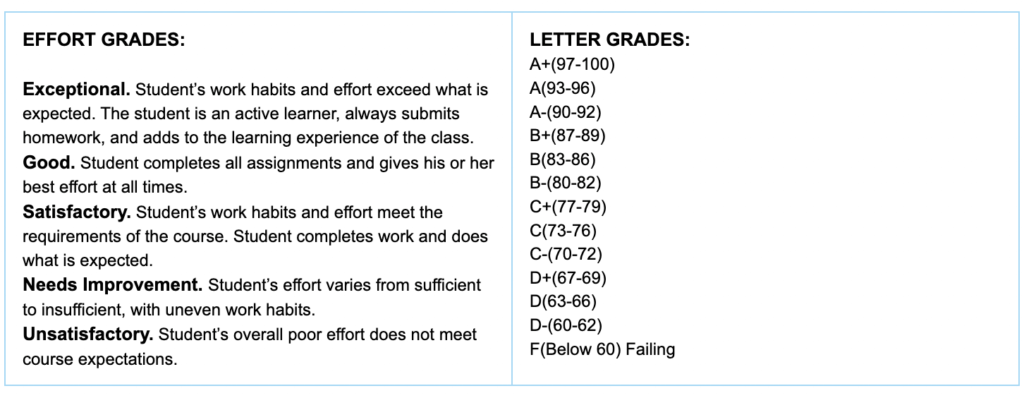Jack Cellucci ’24
“My Apple watch tells me that mid-semester comments came in! I take a sharp breath, ask if I can be excused, run to the bathroom, and read what my teachers have said.” This rather dramatic illustration from Will Esterhai ’24, while sensational, appears to accurately describe the enthusiasm most students experience when they receive their teachers’ feedback at each midpoint of the autumn and spring terms. However, for members of the senior class each year, fall mid-semester grades mark the last segment of their transcripts that colleges will receive in an application. In fact, Seniors don’t receive mid-semester feedback in the spring when the academic focus on improvement has largely transitioned away from life at EA (senioritis). This begs the question: why do these comments exist? What was their original purpose? Are they worth our teachers’ effort? Are they still relevant today?
When asked whether parents see teacher feedback before students, Julia Baggini ’26 states, “I’m the first one to see my comments, definitely.” For students, comments are a helpful way to check grades in class. Clementine Clifton ’26 remarks, “The grades and participation [on fall mid-semester report cards] are the most formative of the year.” Additionally, Elizabeth Hershey ’25 shares, “Because of mid-semester comments, I can see my grades from teachers who usually withhold grades [on Canvas].” English teacher and Morgan Chair of Creative Writing Chris McCreary sums up the raison d’être of the feedback: “It’s a useful chance to capture overall impressions of how a student is doing. Before we had Canvas, they were a way for parents to see their child’s grades. Now, parents… can do that whenever they want. In that way, the purpose has changed… [and because of that] we try to make the comments more narrative.” In other words, each comment is descriptively written for each student.

Photo courtesy of Carter Yearley ’27
While this is true on the whole, the relevance of comments today is called into question. Although comments are supposed to be reflective of the individual student, Calvin Mackenzie ’25 says, “…you can tell when teachers just copy and paste the name into their comments”, and that some teachers either spend most of the comment section summarizing the class syllabus. Mr. McCreary responds by saying, “I feel like the expectation has always been to have a more narrative comment for each student, but maybe [we as the English department] impose that on ourselves.” Despite wanting to provide great feedback midsemester comments fall right after a week of testing and assignments, and the pressure is on the submit final grades. “It’s valuable but really time-consuming. It’s tricky to [give feedback] well and not fall behind on grading.”
Throughout the evolution of The Episcopal Academy, our technology has shaped our culture. Therefore, since the advent of Canvas, the existence of mid-semester comments lingers because of some key factors:
For one students enjoy them. Feedback satisfies the teenager’s need to ‘be seen;’ a quantitative checkpoint for peace of mind and bar for improvement. Less cynically, college counselors use teachers’ comments to get a better sense of a student’s work ethic in class and their student-teacher relationship. In the coming years, it is up to the community to decide if mid-semester comments are an inefficiency that has become outdated with the incorporation of Canvas, or a much anticipated and appreciated part of the fall report card.
In the end, McCreary hopes that students and parents get a sense of what things they can be doing differently, and have a sense of what a teacher perceives of them in the classroom.
With enough time to get in front of lost points and change your trajectory for college (you’ll be fine), in a way, fall mid semesters are the first and therefore least reliable source of performance from any single class.